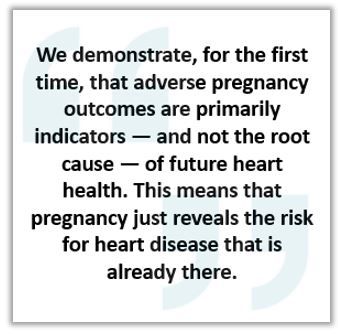Obesity Before, During Pregnancy Key to Future Cardiovascular Risk, New Research Suggests
©Kletr/stock.adobe.com

Obesity prior to or during early pregnancy may pose the greatest risk for both short- and long-term adverse cardiovascular outcomes, according to new findings published in the journal Circulation Research.1
Results of the study, from investigators at Northwestern Medicine, suggest that prepregnancy obesity could be the common factor driving both adverse pregnancy outcomes (APO), eg, hypertensive disorders of pregnancy, preterm birth, and gestational diabetes, and future risk of cardiovascular disease (CVD).1
“We demonstrate, for the first time, that adverse pregnancy outcomes are primarily indicators — and not the root cause — of future heart health,” corresponding author Sadiya Khan, MD, the Magerstadt Professor of Cardiovascular Epidemiology at Northwestern University Feinberg School of Medicine said in press statement from Northwestern Medicine.2 “This means that pregnancy just reveals the risk for heart disease that is already there.”2
Historically it has been unclear whether overweight and obesity or APO had more significant impact on CVD in later life, the investigators wrote. The Northwestern study, they add, is one of the first to follow nulliparous women—approximately half of whom had overweight or obesity—from early gestation through several years postpartum.1
Khan and colleagues assessed the correlation between body mass index (BMI) and APOs in a sample of adults from the nuMoM2b (Nulliparous Pregnancy Outcomes Study: Monitoring Mothers-To-Be Heart Health) study, enrolled during the first trimester of pregnancy (6 to 13 weeks/6 days gestation). Participants were screened at 8 sites across the US between 2014 and 2017.1 Eligibility criteria included being nulliparous, aged 18 years or older, with a singleton pregnancy, and no history of prepregnancy hypertension or diabetes.
Follow-up was conducted at 3.7 years postpartum.1
The primary mediators of interest for analysis were hypertensive disorders of pregnancy, including preeclampsia, eclampsia, and gestational hypertension. The primary outcome was the development of CVD risk factors, measured in 3 cardiometabolic domains: hypertension, hyperlipidemia, and diabetes. Additional APO subtypes were categorized as preterm birth, small for gestational age birth, and gestational diabetes.1
The final cohort numbered 4216 participants with an average age of 27 years at the early pregnancy first visit. The overall mean gestational age was 11.4 weeks. The investigators reported normal BMI among 53%, overweight among 25%, and obesity among 22% of participants. The average length of gestation was 39 weeks and mean birthweight of neonates, 3.3 kg.1

FINDINGS1
Khan et al observed hypertensive disorders of pregnancy in 15% of the cohort (9% preeclampsia or eclampsia, 6% gestational hypertension). The team reported preterm birth in 8%, small for gestational age birth in 11%, and gestational diabetes in 4%.
Compared with participants who had a normal BMI in early pregnancy, the researchers found that those with overweight (adjusted odds ratio [aOR], 1.64; 95% CI,1.31–2.06) or obesity (aOR , 2.34; 95% CI, 1.85–2.96) had significantly higher risk of hypertensive disorders of pregnancy.
At the mean follow-up of 3.7 (range, 2-7) years, early pregnancy obesity was associated with a higher incidence of postpartum hypertension (aOR, 1.14; 95% CI, 1.1-1.18), hyperlipidemia (aOR, 1.11; 95% CI, 1.08-1.14) and diabetes (aOR, 1.03; 95% CI, 1.01-1.04). The association remained after adjustments were made for baseline CVD risk-factor levels.
When they analyzed APO associated specifically with hypertensive disorders of pregnancy, Kahn and colleagues found participants at 97% greater risk for postpartum hypertension (95% CI, 1.61-2.4) and a 31% greater likelihood of having hyperlipidemia (95% CI, 1.03-1.67).
The proportion of mediation by hypertensive disorders of pregnancy between obesity and incident hypertension, investigators added, was significant and yet small (13%). Hypertensive disorders of pregnancy had no mediating effect on postpartum hyperlipidemia or diabetes. Neither preterm birth nor small for gestational age at birth were associated with significant mediation of the association between obesity and any incident CVD risk factors.1
“Our hypothesis was that it may be that the pregnancy complications are unmasking these things since, as we know, pregnancy is a natural stress test for the heart,” Khan said.2 “These findings are important because if pre-pregnancy obesity is the culprit or cause of risk, we should be targeting this with interventions.”2